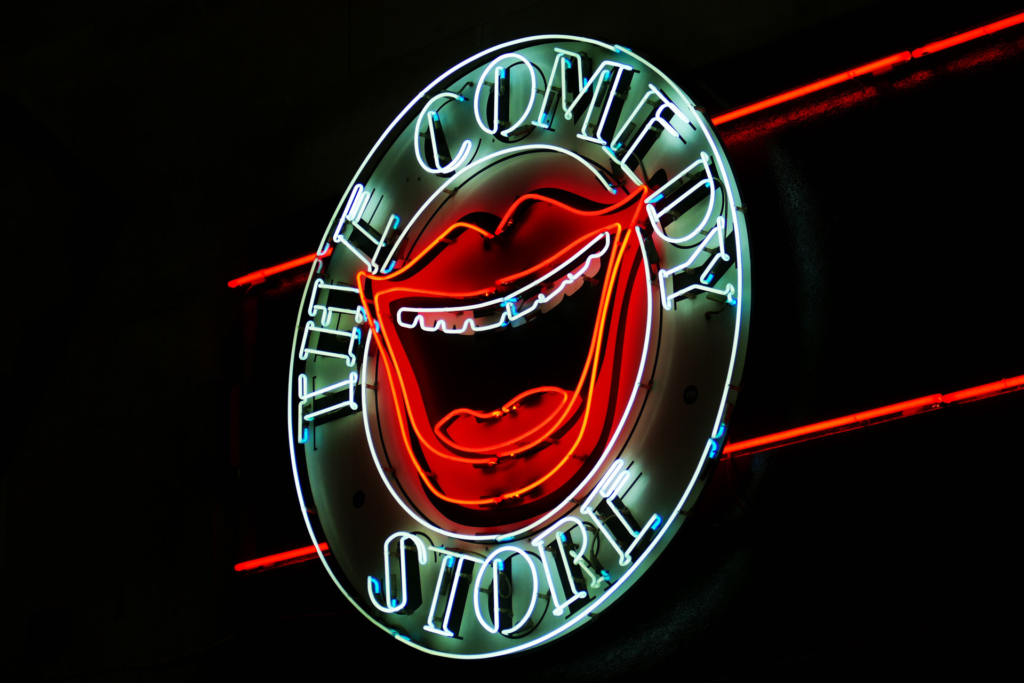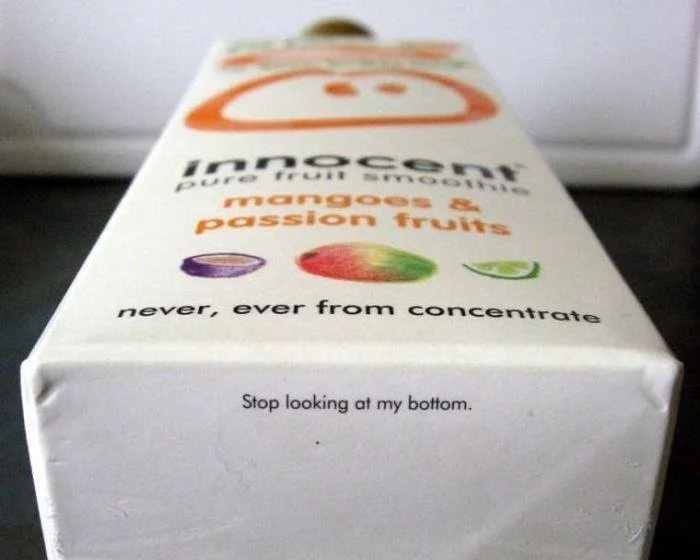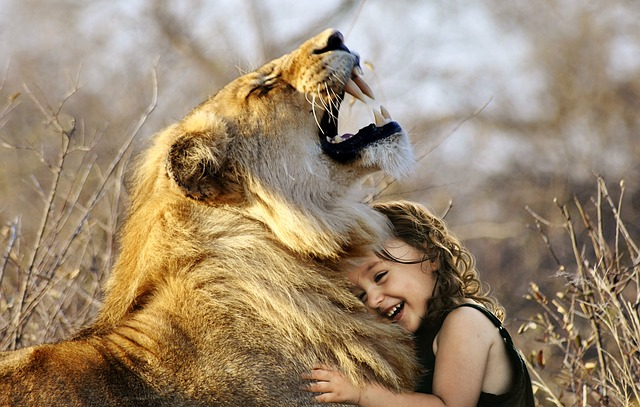In any web design project, the importance of a clear and comprehensive brief cannot be understated. It serves as a roadmap, laying out the client’s vision, objectives and all the specifics of the website project for the Designer to follow.
But amidst the serious talk of brand guidelines, target demographics and site functionalities is there a place for humour? Perhaps at first glance, jesting and design briefs seem like unlikely companions, but there is a compelling case to be made for the subtle art of humour even in a professional setting.

In this blog, we will explore the power of humour, the importance of a website design brief in any successful web project, and how, by intertwining the two, you can potentially reshape the dynamics of Client-Designer interactions, leading to more memorable and effective design outcomes.
The Power of Humour
Humour has a profound effect on the human psyche. Its influence reaches far beyond a chuckle or a fleeting smile; it can shape perceptions, establish connections and even change behaviours. Here’s how humour can help in a professional setting:
- Emotional Connection: At its core, humour is a bridge between two parties, fostering understanding and camaraderie. When something is funny, it resonates, often leading to a stronger emotional bond. In the arena of business and design, this connection can be invaluable.
- Memory and Retention: Have you ever noticed how people remember a funny advertisement over a conventional one? That is because humour acts as a cognitive hook. For a Designer, incorporating humour can make the brief more memorable, ensuring that key points stick.
- Facilitating Difficult Conversations: Humour can be a buffer, softening the blow of criticism or making challenging topics more digestible. In the creative nature of a design process, this light-hearted approach can be a game-changer, making revisions less intimidating and more collaborative.
- Enhanced Creativity: A lighter atmosphere, peppered with humour, can free the mind, leading to more innovative and unconventional solutions. In design, where thinking outside the box is paramount, this can be a significant advantage.
- Examples in Branding: Numerous brands harness the power of humour to stand out in a crowded marketplace. From Old Spice’s quirky commercials to Snickers’, ‘You’re not you when you’re hungry’, campaign, IKEA’s playful jabs at Apple’s product videos, Innocent’s cheeky packaging, or Budweiser’s ‘Wassup’ commercials, humour has repeatedly proven its worth in capturing attention and establishing brand identity.

The Role of a Web Design Brief
A web design brief is much more than a collection of instructions. It is the backbone of the web design process, a structured document that encapsulates a client’s vision, objectives and any specific requirements. A good web design brief does the following:
- Sets Clear Expectations: The primary goal of a website design brief is to outline the client’s expectations clearly. This includes design aesthetics, functionality needs, target audience demographics and project timelines. By setting these parameters, both the client and Designer start on the same page, minimising potential misunderstandings.
- Guides the Design Process: A comprehensive website brief serves as a roadmap for Designers and Developers. It provides direction and focus, ensuring that the design process aligns with the client’s goals. Without this guidance, a project can easily go off track, wasting time and resources.
- Facilitates Communication: A well-prepared web design brief acts as a communication tool between the client and the Designer. It is a reference point for discussions, ensuring that feedback, revisions and all changes align with the overarching project objectives.
- Aids Budget and Resource Management: By detailing specific requirements, desired features, and the scope of the project, a web design brief allows for efficient allocation of resources and budget management. It helps prevent scope creep and ensures that both parties are aligned on cost implications.
- Measures Success: Post-launch, the initial web design brief can be revisited to assess the project’s success. Comparing the finished product with the brief’s objectives allows for a tangible evaluation of how well the goals were met.

Image credit: Ryan Grewell
In essence, the web design brief is foundational to the entire web design process. It creates a structured framework within which creativity can flourish, ensuring that the end product is not only aesthetically pleasing but also aligns with the client’s strategic objectives.
Benefits of Including Humour in a Web Design Brief
Humour, when used thoughtfully, can be an invaluable tool, even in seemingly structured and formal contexts. Here’s how:
1. Engaging the Client:
A touch of humour can transform a mundane document into an engaging read. When a client sifts through a myriad of briefs or documents, a sprinkling of wit can make yours stand out, ensuring key points are remembered and the overall vision is grasped.
2. Fostering Creativity:
Humour can serve as a catalyst for creativity. A relaxed and playful tone can inspire Designers and clients to think more freely and innovatively, leading to unique and memorable web designs.
3. Building Stronger Client-Designer Relationships:
Humour can be a bonding agent. Shared laughs or light-hearted moments can foster a sense of camaraderie and trust between the client and Designer, making the design process more collaborative and enjoyable.
4. Diffusing Tension:
Web design projects can occasionally be fraught with tension, especially when there are challenges or disagreements. A dash of humour can help in diffusing potential tension, making the feedback and revision process smoother.
5. Encouraging Open Communication:
A good website design brief with a humorous tone can signal to the Designer that the client is approachable and open to dialogue. This can lead to more open and honest communication, ensuring a better alignment of visions and objectives.
6. Making Technical Information Accessible:
Web design briefs often contain technical jargon or complex requirements. Using humour can simplify and contextualise this information, making it more digestible for everyone involved.
7. Enhancing Brand Personality:
If a brand inherently possesses a humorous or playful personality, reflecting that in the web design brief can ensure that the design aligns with the brand’s character. This can lead to a more authentic final product.

Image credit: Dan Cook
While the benefits of using humour are undeniable, it is essential to strike a balance. Humour in a good web design brief should serve a purpose, enhancing the document without overshadowing the critical information it contains. As with any tool, the efficacy of humour lies in using it wisely and in moderation.
There’s Such a Thing as Too Much Humour!
While there is a place for humour in most settings, it is not without its pitfalls. Recognising these potential downsides is crucial for its successful integration. Here are some considerations to bear in mind:
- Risk of Misinterpretation: Humour is deeply cultural and subjective. What one person finds amusing, another might deem offensive or simply not understand. Such misinterpretations can lead to unnecessary complications or even strained Client-Designer relationships.
- Perceived Lack of Professionalism: Some clients might interpret the use of humour in a design brief as a sign of not taking the project seriously. This perception can challenge the establishment of trust and the credibility of the Designer or design agency.
- Overshadowing Critical Information: If not balanced correctly, humour can divert attention from essential details in the brief, causing pivotal elements to be overlooked or misunderstood.
- Potential for Ambiguity: Clear communication is paramount in any design brief. Humorous elements, if not well-crafted, can introduce ambiguity, leading to confusion about project requirements or objectives.
- Mismatch with Brand Tone: If a brand is serious or caters to a more conservative audience, humour in the design brief can feel out of place and might not align with the desired brand image.
- Time Wasting: Crafting appropriate and effective humour can be time-consuming. In trying to get it ‘just right,’ designers might spend more time on the tone than on fleshing out critical details of the project.
- Limiting Audience Engagement: While humour might resonate with some stakeholders involved, others might feel alienated if they don’t ‘get’ the joke, potentially limiting broader engagement with the brief.

Knowing when, where, and how to infuse humour into a professional setting can be the difference between a successful, memorable brief and one that completely misses the mark!
Knowing Your Audience
One of the cardinal rules in communication, be it in marketing, storytelling, or even a simple conversation, is understanding your audience. When contemplating the integration of humour into a web design brief, this principle is paramount. Here’s why:
1. Cultural Sensitivities:
Humour often stems from cultural references, norms and values. What is funny in one culture might be perplexing or even disrespectful in another. When contemplating including humour in a design brief, it is vital to consider the cultural background and sensitivities of the client or stakeholders involved.
2. Brand Identity and Values:
Aligning humour with the brand’s identity is essential. If a brand has a legacy of seriousness or caters to a particular niche that values straightforward communication, introducing humour might feel inappropriate.
3. Stakeholder Preferences:
Different stakeholders involved in a project might have varied approaches to humour. While a marketing team and or web design agency might appreciate a more playful tone, Executives or technical teams might prefer a more direct approach when creating a new website.
4. Purpose of the Brief:
Understanding the primary objective of the design brief can guide the type and amount of humour incorporated. If the brief is meant to inspire and brainstorm, a lighter tone might be apt. However, if it’s a final document outlining exact specifications, clarity will be more valued.
5. Previous Interactions:
If you have worked with the client on their existing website, past interactions can offer insights. Were previous meetings and discussions formal or more laid-back? Using this can help gauge the appropriateness of including humour.
6. Openness to Innovation:
Some clients are more open to unconventional approaches, while others prefer to stick to tried-and-tested methods. Understanding this can help determine whether incorporating humour into a design brief will be seen as refreshingly innovative or unnecessarily risky.

In essence, humour is not a one-size-fits-all tool. Just as a Designer would tailor a website’s aesthetics and functionality to its target audience, the tone and humour in a design brief should be written to fit the preferences of its readers. Only by gauging and understanding the audience can humour be used effectively, enhancing communication without detracting from the website brief’s primary objectives.
Tips for Incorporating Humour Successfully
Injecting humour into a web design brief requires tact, subtlety and a keen understanding of the context of the website project. To ensure it adds value rather than causing distraction or confusion, consider the following tips:
- Be Authentic: Forced humour can be easily spotted and often falls flat. Be genuine in your attempts, and if a humorous element doesn’t feel right, it might be best to leave it out.
- Stay Relevant: Ensure that any humorous content or anecdotes directly relate to the topic at hand. Irrelevant jokes can divert attention from the primary message.
- Use Sparingly: Less is often more when it comes to humour in formal documents. A light touch can be more effective than overloading the web design brief with jokes or puns.
- Avoid Sarcasm: While sarcasm can break the ice in many settings, it can easily be misinterpreted in written form, leading to unintended offence.
- Test it Out: Before finalising the website brief, share it with a colleague or trusted friend to gauge their reaction. Their feedback can provide valuable insights into whether the humour hits the mark or completely misses it.
- Know When to Skip it: Some topics or sections of the website design brief might be more sensitive or critical than others. Recognise when it’s more appropriate to maintain a professional tone.
- Keep it Positive: Ensure that any humour used is uplifting and doesn’t demean any group, idea or individual. Negativity can easily alienate readers.
- Consider Visual Humour: Sometimes, a light-hearted illustration, icon or graphic can convey humour without using words, reducing the risk of misinterpretation.
- Stay Updated: Humour evolves with culture. What’s funny today might be outdated or irrelevant tomorrow. Stay updated with current events and trends to ensure your humour remains relevant and relatable.
- Be Prepared to Revise: If the client or stakeholder feedback suggests that they didn’t appreciate or understand the humour, be flexible and willing to adapt the tone to suit their preferences.

By weaving humour into your web design brief sparingly, you can create a document that not only conveys essential information but also resonates on a more personal and memorable level with your client.
